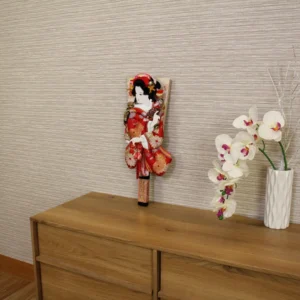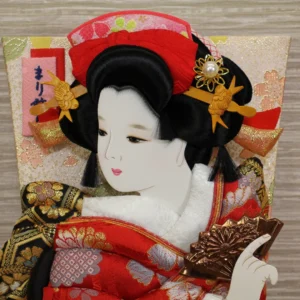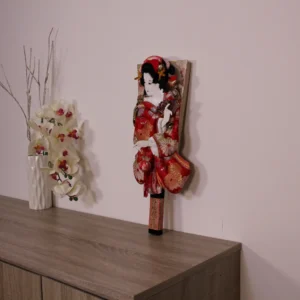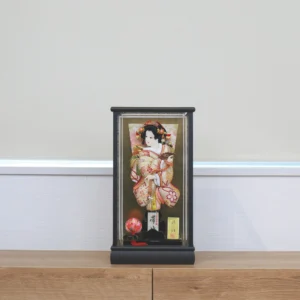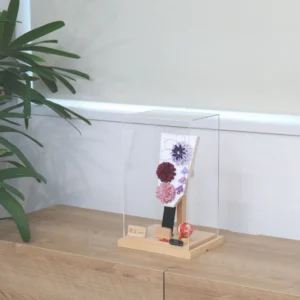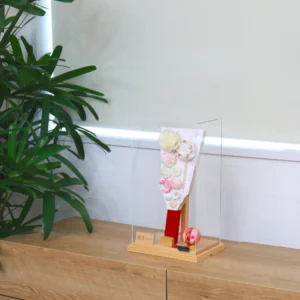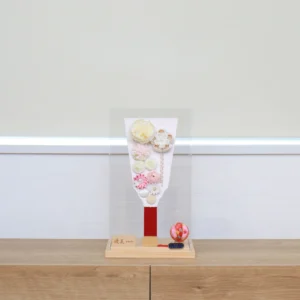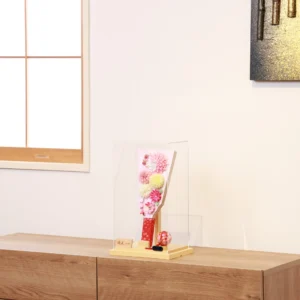Explore Our Handcrafted Hagoita Collection and bring home a vibrant piece of Japan’s New Year tradition.
Hagoita (羽子板)
A Soft Glow from the Heart of Japan
The gentle light of a Chōchin lantern carries more than warmth—it carries history, craftsmanship, and a piece of Japanese spirit. Found hanging outside temples, teahouses, and during festivals, these iconic lanterns have long guided people through quiet streets and sacred grounds. At Fujiki Crafts, we preserve this age-old craft by creating handmade Chōchin lanterns using traditional materials and techniques, bringing a timeless glow to modern spaces.
From Game to Good Luck Charm
in the Edo period, families would play Hanetsuki, a game using Hagoita paddles and shuttlecocks, much like badminton. The game was especially popular among girls during the New Year season, and it was believed that the longer you could keep the shuttlecock in the air, the more luck you would have.
But more than a game, the Hagoita soon took on a deeper meaning. Its wide, flat shape was thought to “swat away” evil spirits, making it a protective talisman for children. By the 18th century, Hagoita were being made as decorative gifts, often adorned with ornate fabric art and images of kabuki actors, elegant ladies, or seasonal motifs.
Today, Hagoita are cherished as symbols of happiness, elegance, and protection, especially during the New Year—a beautiful reminder of Japan’s artistry and cultural depth.


Why Hagoita Are Still Cherished Today
While no longer used for games, Hagoita are still loved as decorative charms for the New Year, especially in homes with young daughters. They are often displayed in entryways or given as gifts, bringing wishes of happiness, protection, and a graceful future.
Some are designed with kabuki actors or historical figures, while others are modern and colorful, appealing to collectors and cultural enthusiasts alike. Every Hagoita tells a story—of protection, beauty, and joyful tradition.
How Hagoita Are Made

Step 1 Sketching the Design
Each Hagoita begins with a detailed blueprint, combining different fabrics, patterns, and accessories. The artisan envisions the full composition—from kimono folds to props—before assembling the paddle.

Step 2 Painting the Face
The doll's face is hand-painted by a specialist known as a physiognomist, using fine brushwork to create an elegant and expressive look. Each expression is unique, full of character and charm.

Step 3 Creating the Costume & Form
To give the figure depth and movement, the costume is padded with cotton and wrapped in layered textiles. Finally, traditional dance props or fans are added, completing the graceful form of the character.
Why Fujiki Crafts Preserves the Hagoita Tradition
At Fujiki Crafts, we see each Hagoita as a blend of heritage and creativity. Our artisans continue this tradition with the same care and attention as in centuries past, using hand-applied materials and traditional designs to keep the charm and meaning of the Hagoita alive.
We believe in passing on not just the object, but the intention behind it—the wish for joy, luck, and protection in the year ahead.






